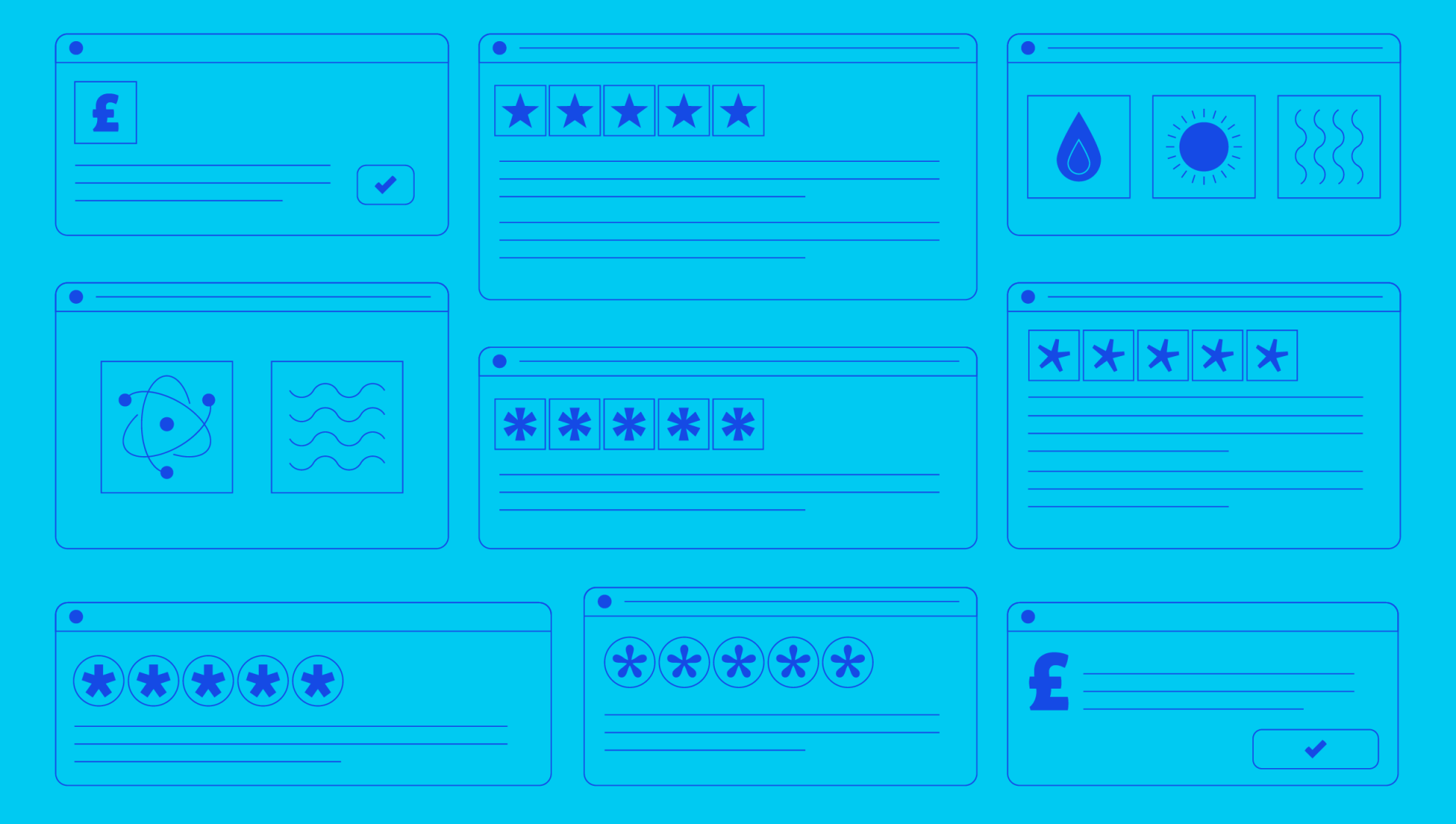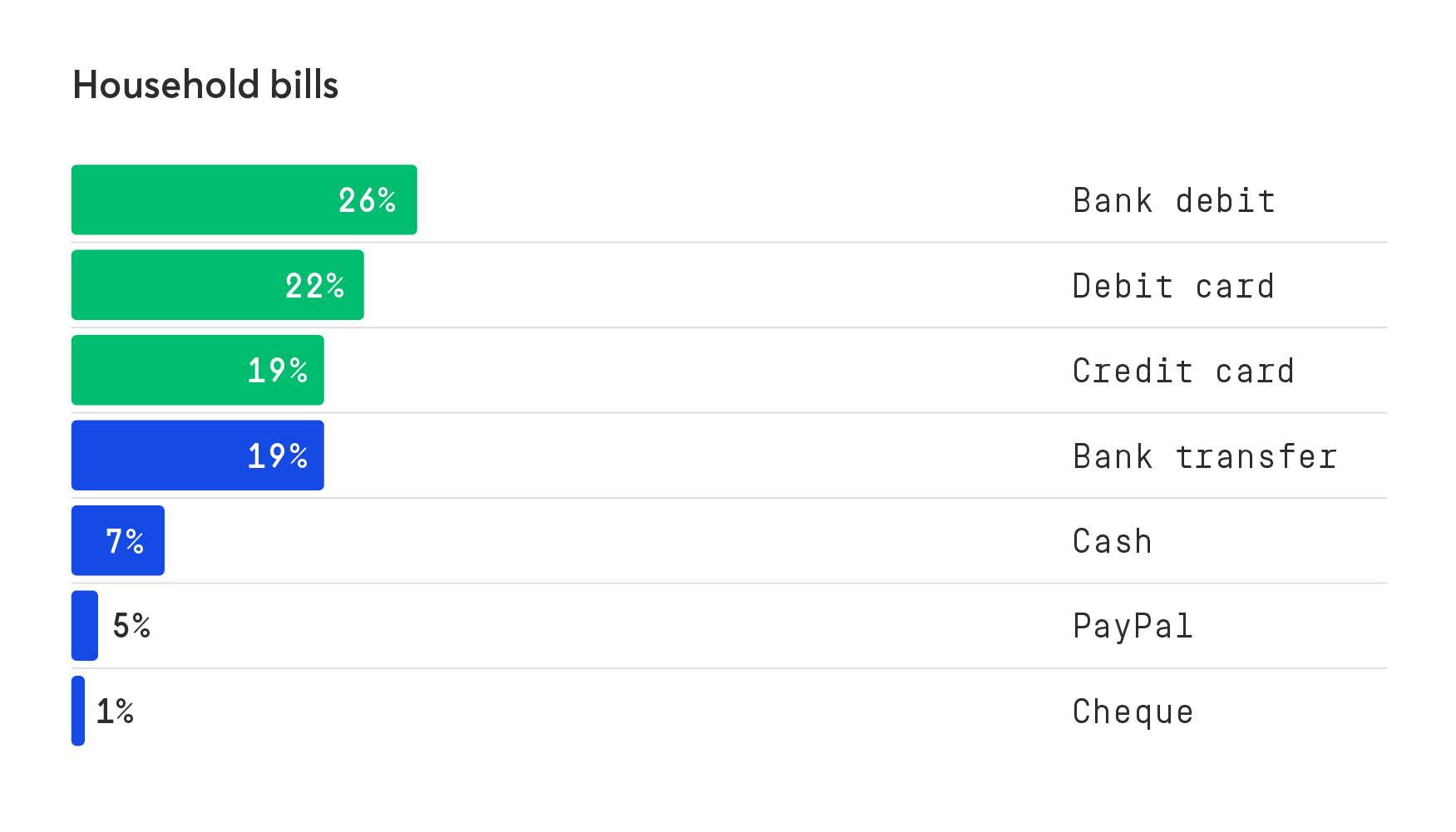How do customers want to pay for their household energy bills?

Last editedMay 20213 min read
The payment method consumers choose to use - we call this payment preference - can have a huge impact on both customer acquisition and retention for an energy business. Therefore, the payment method(s) your business offers is an important consideration for any payments function.
In this article we will help to answer:
How do your customers want to pay for their household energy bills?
What is consumer payment preference and why is it so important?
Do customer preferences meet your business objectives?
Does being more customer-centric in your payments strategy pay off?
So, how do your customers want to pay for their household energy bills?
A 2021 YouGov survey of over 15,000 consumers, commissioned by GoCardless, identified bank debit as the most popular way to pay household bills in Australia. Debit and credit cards came in at the second and third most popular choices from consumers.

As 26% of Australian consumers choose to pay their household bills with bank debit, there is clearly a high consumer demand for bank debit as a recurring payment method.
A similar picture can be seen across the globe. For instance, bank debit is the most popular payment method for household bills in the UK, Germany and France. Meanwhile in the US, Canada and New Zealand, bank debit was the second most popular payment method. This shows global demand for these bank-to-bank payment methods, an important fact to consider when thinking about international expansion.
Businesses that do not offer consumers the option to pay with bank debit reduce their chances of winning new customers. As bank debit is so popular in Australia, businesses should also be looking to create a frictionless payment experience when new customers are registering, in order to maximise customer acquisition.
In fact, bank debit was one of the most popular choices for consumers to pay for household bills across all the countries examined. In a study commissioned by GoCardless in July 2020, we asked over 8,100 consumers across Australia, the UK, France, Germany, Denmark, Sweden, USA, Canada, New Zealand, why they chose to pay for a recurring invoice by bank debit. These were the top three reasons given:
“This was the default option”
“Paying this way gives me peace of mind”
“I had these details to hand”
Because bank debit is a ‘pull-based’ payment method, it’s not surprising it is one of the most convenient ways to pay for recurring payments for consumers. Bank debit offers safety, flexibility and automation.
We wanted to give our members whatever payment options they most trusted and were the most convenient. GoCardless was the most simple, reliable and advanced Direct Debit system we found.” - Bulb
What is consumer payment preference and why is it important?
When we discuss consumer payment preference we mean the number of customers who choose a payment method. Customers like to pay in different ways, so there is not a single payment method that will please every customer. However, customers often opt for methods that are trusted, convenient or easy to use.
Why should energy suppliers cater to preferred payment methods?
Introducing new payment methods and managing and maintaining these options can be a complex, costly and time-consuming process, especially for a large or scaling business. However, by offering payment methods that suit a wider range of existing or potential customers your business will be able to retain and win more customers.
By offering preferred payment methods to your customers you will reduce friction in the payment process, making their buying experience smoother. Nonetheless, if you don’t offer a preferred payment method, you run the risk of payers dropping out of the payment process and going to a competitor that does offer their preferred payment.
How will open banking impact consumer preferences?
There is a desire for a more transparent and open exchange of financial data from both businesses and merchants across Australia. Australia saw the first iteration of open banking in the form of the Consumer Data Right (CDR), allowing customers of the big four banks to securely share their financial data with accredited third-party fintechs and other financial institutions. But how will this impact how consumers choose to pay for their energy?
With the increased access to data, businesses and consumers will have access to better-suited financial products and services. This could impact the method consumers use to pay. Many recurring revenue businesses need to collect one-off payments but they are unable to offer bank debit because of the poor one-off payment experience it provides. For example, for businesses using GoCardless in the UK, more consumers can now access their preferred payment method - bank debit - because businesses can seamlessly collect one-off payments from customers outside of a bank debit schedule using open banking. This also reduces checkout friction and creates a better customer experience.
Speak to an expert about incorporating open banking into your payments strategy.
Does consumer preference for bank debit meet your business objectives?
Although bank debit is preferred by most consumers, it’s important to consider the benefits bank debit could have for your business as a payment method. Bank debit is a pull-based method, meaning you have control of when you collect payments from your customers and can easily be automated.
As a bank-to-bank payment method, bank debit avoids the costly transaction fees associated with credit cards and bank debit typically has a lower payment failure rate - which often becomes involuntary churn - than many of the other payment options.

Does being more customer-centric in your payments strategy pay off?
By being customer-centric and catering to consumer preference to pay by bank debit, your business could reap many benefits including; improved customer acquisition, retention and efficiencies in your payment operations, giving your business a competitive advantage.
For a deeper dive into which method(s) consumers choose to pay for their household bills across the globe, read our report: Consumer Payment Preferences in 2021.